Four
Quick & Clean Foods to Love
All of these foods are about to become your new BFFs. If you’ve been on diets before (and most of us have), you’ll probably be surprised by how much variety there is on the following lists. That’s because your BFFs are forever, and that’s a long time, so I don’t want you to feel deprived.
A few of the foods I list may be restricted or not allowed during Stage One, High Motivation. But that’s just two weeks—not forever. So you can look forward to welcoming them back into your life in the Grounding and Stability Stages.
Now let’s take a look at everything you can eat when you go quick and clean. If you stick with your BFFs, you’ll feel energetic, well nourished, satisfied—and never guilty.
Vegetables
Artichokes: One of my favorites, artichokes are packed with antioxidants, and I love them steamed with a dipping sauce of olive oil and lemon juice.
Arugula has eight times the calcium, five times the vitamin A, vitamin C, and vitamin K, and four times the iron as the same amount of iceberg lettuce—not to mention that it tastes amazing. Equally great in salads and on sandwiches, it’s probably my favorite type of lettuce.
Asparagus: These long green stalks are not only delicious and simple to prepare, but also high in folate and a great source of potassium, fiber, thiamin, and vitamins A, B6, and C. Fabulous steamed plain or with a squeeze of lemon.

Bamboo shoots: You’ve probably had them in Chinese food, but bamboo adds crunch and a cornlike flavor to any salad or stir-fry. And from a health perspective, they have 2 grams of protein, 1.2 grams of fiber, and 18 percent of your daily potassium requirements in just one cup. Not bad!
Bell peppers (all colors): They come in a rainbow of gorgeous colors, and a cup of chopped bell peppers provides more than 100 percent of your daily requirements of vitamin C as well as folate, vitamin K, and a lot of fiber. Eaten raw as a snack or in salads, they pack a great crunch. Or throw them on the grill with a spritz of nonstick olive oil cooking spray and serve them as an antipasto or a side dish.
Broccoli: A dream vegetable! Broccoli is a rich source of phytochemicals (nutrients found in plant-based foods) that are known to fight cancer! It’s also great for your eyes and is known to fortify your immune system. Eat it raw or steamed, with lemon and a drizzle of olive oil, or sprinkled with a little Bragg’s Aminos (see chapter 5).
Brussels sprouts: These little jewels are loaded with fiber as well as antioxidants called flavonoids that have been shown to protect against certain types of cancer, and they contain more than 100 percent of your daily requirement of vitamin C. Try them steamed and drizzled with lemon and olive oil, sautéed with a bit of oil or nonstick cooking spray, or roasted. Or grate them raw into salads.
Cabbage (red or green): Along with broccoli, cauliflower, and brussels sprouts, cabbage is a cruciferous vegetable, and all cruciferous vegetables are known for their many disease-fighting and other important health benefits. Red cabbage (because of the polyphenols that provide its red color) is even higher in antioxidants than green. Have it steamed as a side; place on a plate and lay a protein over it; or grate it into coleslaw.
Carrots: One of my favorites! They’re crunchy and sweet and packed with dietary fiber, vitamins A, C, and B6. Perfect for dipping.
Cauliflower: A good source of protein, thiamin, riboflavin, niacin and magnesium and phosphorus. It has a good amount of dietary fiber as well. Cauliflower is great roasted in the oven with garlic or steamed and mashed like a potato.
Celery: Grab a stalk and eat it raw. Celery is loaded with vitamin C, fiber, folate, potassium, and vitamins B1 and B6. And here’s the great news: Celery is so low in calories and so high in fiber that you actually burn more calories eating and digesting it than the celery contains. It’s great raw with a little cashew or almond butter; or try adding it to stir-fries for crunch. However you prepare it, celery should be in your life!
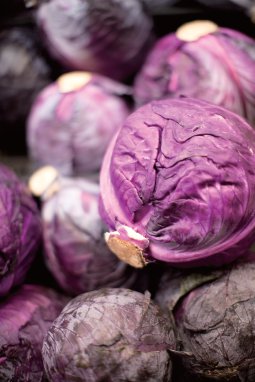
Chard: Vitamins C, E, and K, carotene, chlorophyll, and fiber—that’s what chard is made of! It is also a good source of protein, calcium, selenium, zinc, niacin, and folate. Need any more reasons to put chard in your diet? It’s one of the most popular vegetables in Mediterranean cooking, and it’s great sautéed in a bit of olive oil with garlic and a squeeze of lemon juice or a sprinkling of red pepper flakes.
Corn: A good source of vitamins B1, B5 (pantothenic acid), C, and E, it also contains folate, magnesium, and phosphorus, and is a good source of complex carbohydrates, fiber, and essential fatty acids. Yellow corn is high in the carotenoid lutein, which can protect against heart disease and macular degeneration. Eat it boiled or grilled, on or off the cob, in salads, or added to soups and stews.
Cucumber: Because cucumber is very high in water, it is also very low in calories. But that doesn’t mean it isn’t nutritious. Cucumbers are a very good source of vitamins A and C and folate. The dark skin is also rich in fiber and minerals, including magnesium and potassium. Eat them raw in salads or by themselves, or make a cucumber salad with dill and rice vinegar—yum!
Eggplant: Rich in fiber and antioxidants, eggplant comes in many different colors, shapes, and sizes, all of which contain good amounts of B-complex vitamins, as well as minerals like manganese, copper, iron, and potassium. Eggplant is great sautéed, but it can soak up a lot of oil, so I’d recommend broiling or grilling it with a spritz of nonstick olive oil cooking spray.
Endive: There are actually several varieties of endive, including what most of us know as chicory and escarole. But you are probably most familiar with Belgian endive, which has lightly packed, flat leaves and looks sort of like a six-inch-long light green torpedo. It also is a good source of vitamin A and C. You can braise it or use it raw in salads—but be sure to wash it well, because those tightly packed leaves can be very sandy.
Garlic: So much can be said about this powerful little bulb! Maybe it doesn’t really ward off evil spirits, but it has been shown to protect against some types of cancer and to lower cholesterol. Interestingly, studies indicate that chopping or crushing it and then allowing it to sit for fifteen minutes before cooking helps to release an enzyme that boosts its healthy compounds. If raw garlic is too strong for your taste, sautéing it makes its flavor a lot milder. Just don’t burn it, because then it will turn bitter.
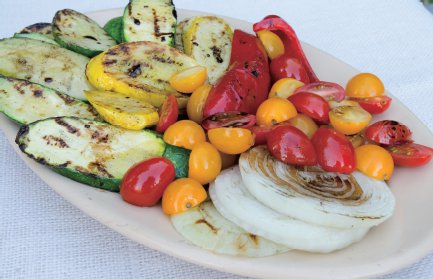
Green beans (string, snap, French): Protein and fiber are what green beans are known for. These beans are low in fat and high in complex carbohydrates. They are a good source of folate and molybdenum as well as iron, phosphorus, magnesium, manganese, and potassium. Try them cooked or raw. The benefits are endless.
Green peas contain a variety of antioxidants as well as vitamins C and E, zinc, and health-promoting omega-3 fatty acids. I love eating green peas right out of the shell, but I also love snow peas and sugar snap peas, both of which can be eaten pod and all, raw, cooked on their own, or in stir-fries—to name just a few of the ways to enjoy them.
Greens (collard, mustard, turnip, kale): Naturally high in fiber, greens help you fill up without filling out. And dark green leafy greens are loaded with beta-carotene, an antioxidant that helps to fight against cancer and heart disease. They are also great sources of vitamin C, folate, vitamin B6, manganese, and potassium. Greens are great raw in salads, steamed, or sautéed.
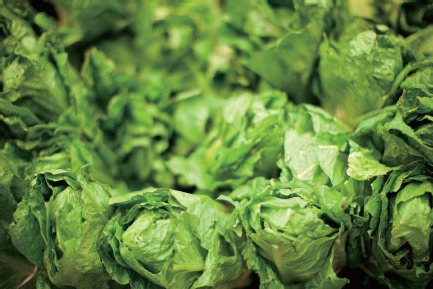
Hot peppers: If you like spicy, these are for you! The fire in hot peppers comes from capsaicin, which triggers the pain receptors in your mouth. Capsaicin has been shown to decrease blood cholesterol and triglyceride levels, boost immunity, and reduce the risk of stomach ulcers by killing bacteria in the stomach that can lead to ulcers. Not all hot peppers are created equal, and their heat is measured on what is called the Scoville scale from hottest to mildest. To see the ratings, go online to scovillescaleforpeppers.com. To make your dish milder, seed and rinse the peppers before using them (just remember to wash your hands after you handle them to avoid inadvertently rubbing your eyes—that smarts!), and use fewer, to accommodate your tolerance for spice.
Leeks: One of my favorites! Leeks provide fiber, folate, vitamins C and B6, and important minerals like manganese and iron. Anything that you do with onions or garlic, you can also do with leeks.
Lettuce (all types): The varieties are endless! Lettuce is mostly made of water, but some varieties offer more nutrients than others, including beta-carotene, folate, vitamin C, and potassium. The rock stars are radicchio, arugula, endive, chicory, and escarole, but all lettuce is also a great source of fiber. Grab a mix and make a salad!
Mushrooms: I’ve included mushrooms among the vegetables, but actually they’re a type of fungus (sorry)! They’re high in water and fiber, which means they’re low in calories, and they have numerous health benefits, including potassium, riboflavin, selenium, and niacin. Mushrooms come in so many varieties, from meaty portobellos to pungent crimini, tiny mild enoki, and regular white, that there must be a mushroom for every taste and every occasion. Have them raw in salads, use them in vegetarian stews, add them to stir-fries, or combine them with other vegetables or legumes—to name just a few of the many ways to incorporate mushrooms into your diet.
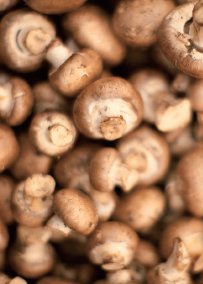
Okra: Although it’s best known in the South for its use in gumbo, anybody anywhere can benefit from okra. It is loaded with vitamins B6 and C as well as fiber, calcium, and folate. It is known to be effective for the prevention of neural tube defects in developing fetuses. Okra is great steamed or sautéed; combined with tomatoes, a little thyme, and a bay leaf, it makes a great vegetarian stew.
Onions, scallions, and shallots: Onions and their cousins provide vitamins B6 and C, chromium, biotin, and fiber. They also contain folate, provide vitamins B1 and K, and are believed to protect against heart disease, lower inflammation at the cellular level, and reduce the risk of prostate cancer. Not to mention that they are delicious cooked or raw, in almost any meal, and come in many varieties from sweet to pungent.
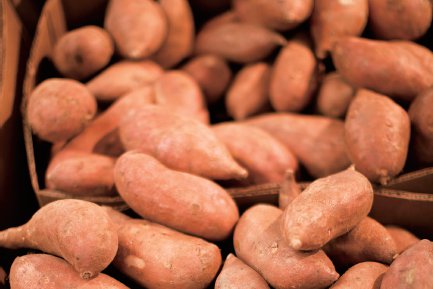
Potatoes, sweet: I love all kinds of potatoes, and I believe they’ve gotten a bad rap by being called “fattening.” Sweet potatoes in particular have significant health benefits, with possibly more bioavailable (meaning that our bodies are able to use it) beta-carotene than any other vegetable. Despite the fact that they are, in fact, a starchy vegetable, recent studies have shown that they actually help to control blood sugar rather than raising it.
Potatoes, white: White potatoes aren’t bad either. They are a good source of vitamin B6, vitamin C, copper, potassium, manganese, and fiber. In fact, a baked potato has more potassium than any other vegetable and more than a banana. And they also have significant antioxidant properties. In addition, British scientists at the Institute of Food Research have recently identified blood-pressure-lowering compounds called kukoamines in potatoes. One medium baked potato has only about 150 calories. It’s the way we cook potatoes (such as deep-frying) and the stuff we love to put on them (butter and sour cream) that can make what is essentially a healthy food unhealthy.
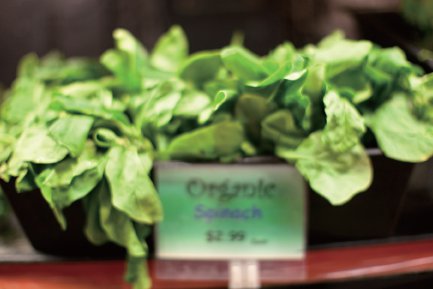
Radishes: Some say their flavor takes a little getting used to, but radishes are high in vitamin C, are a good source of calcium, and contain compounds that have been shown to protect against colon cancer. Eat one raw, like an apple, or add them to salads for extra zing.
Spinach contains more nutrients than almost any other vegetable. It is a major source of vitamins C and K, cancer-fighting carotenes, and folate, and also contains significant amounts of manganese, iron, magnesium, and vitamins B2, B1, B6, and E. Just so you know, the iron content of spinach is twice that of other greens (so Popeye was right!) and it is one of the most alkaline foods you can find, meaning that it helps to regulate the body’s pH balance. Spinach is great for promoting eye health by preventing macular degeneration and cataracts. Eat it raw in salads, steamed, or sautéed—just be sure to eat it often!
Sprouts (all types) are loaded with antioxidants, protein, chlorophyll, vitamins, minerals, and amino acids. Ever heard of wheatgrass? The juice is considered to be the closest substance to hemoglobin and is therefore an amazing blood purifier and liver detoxifier. Sprouts come in many varieties and flavors and are great in salads, so be adventurous.
Squash comes in many shapes and colors and is known for its fiber content as well as for containing good amounts of vitamin C, beta-carotene, and folate. It is credited with helping to prevent many cancers and heart disease, as well as the inflammation associated with arthritis and asthma. Baked, sautéed, steamed, or stir-fried, squash is fabulous.
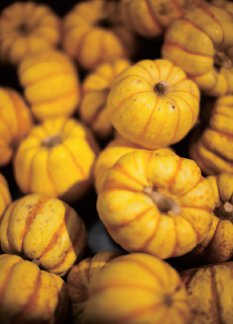
Tomato: See Fruits (that’s right: A tomato is a fruit).
Turnips: Similar to potatoes in texture, turnips have a slightly bitter flavor. They contain vitamin C and many B vitamins, including riboflavin, thiamin, niacin, folate, and pantothenic acid. Turnips are also great sources of fiber and pair well with naturally sweet meats like pork. Try them mashed instead of potatoes!
Zucchini: Though it’s actually a summer squash, we’ve come to think of zucchini as a vegetable in a category all its own. It’s an important source of potassium, which helps to lower blood pressure; B vitamins like thiamin, pyridoxine, and riboflavin; and minerals such as iron, manganese, phosphorus, and zinc. Have it grilled, steamed, or sautéed with almost any meal.
Fruits
Apples contain pectin, a fat-soluble fiber that, in combination with other apple phytonutrients, has been shown to lower blood fat. They also contain good amounts of vitamin C, potassium, and health-promoting polyphenols—which have been shown to help control blood sugar—and have many other health benefits as well. So an apple a day may really help keep the doctor away. They come in so many varieties that there’s surely one to suit your taste. And they give you a lot of “chew” and satisfaction for your calorie buck.
Apricots: These are yet another orange-colored food that’s high in beta-carotene and vitamin A. Researchers involved in the Nurses’ Health Study, one of the longest-running and most comprehensive studies of women’s health, found that those with the highest intake of vitamin A reduced their risk of developing cataracts by 40 percent. And one apricot has only 17 calories! When they’re in season (approximately May through August) enjoy one freshly picked or with half a cup of 2 percent cottage cheese.

Avocado: They’re one of the best sources of potassium and contain good amounts of vitamins B and E. While they are very high in fat, more than half their total fat is in the form of monounsaturated oleic acid, which has been shown to lower the risk for heart disease. In addition, research has shown that, when eaten in combination, avocado can increase the absorption of carotenoids (which are powerful antioxidants) from other foods—and the avocado itself contains a wide variety of carotenoids. Add them to salads or mash a ripe avocado with tomato, onion, and cilantro to make a delicious guacamole. Just don’t overdo—healthy or not, fat is high in calories.

Bananas: Extremely high in potassium, bananas also contain vitamins C and B6 as well as loads of fiber, magnesium, carbohydrates, riboflavin, and biotin. The riper the banana the sweeter it is, because the starch is turning to sugar. Bananas, while they’re certainly healthy, are also high on the glycemic index.
Blackberries: In addition to vitamins C and E, blackberries are a super source of polyphenols and anthocyanins, two types of antioxidant that can help to protect against many types of chronic diseases. And of course, they are delicious. Eat them alone or in combination with other health-promoting berries.
Blueberries have one of the highest antioxidant capacities of all fruits and vegetables. In addition, they are a great source of fiber, vitamin C, manganese, and riboflavin. And at least one recent study has shown that they may help to improve memory in older adults and so might help to postpone the onset of cognitive problems related to aging. Although they are not usually considered “low” on the glycemic index, recent studies have shown that people already diagnosed with Type 2 diabetes who eat blueberries along with other low-glycemic fruits for a period of three months showed a significant increase in their ability to control blood sugar. So go ahead and eat your blueberries—they’re good for you.
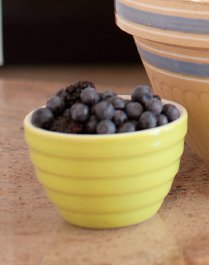
Cantaloupe and honeydew melon: They’re fat-free, juicy, sweet, and good sources of potassium and vitamin C. Have them for breakfast, a snack, or even dessert.
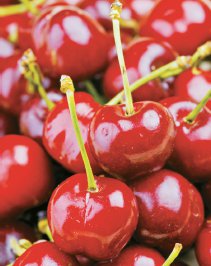
Cherries: Gorgeous! Anthocyanins, which give cherries their color, are natural pain relievers and anti-inflammatories. They also contain melatonin, which helps to regulate sleep cycles; are rich in fiber and vitamin C; and contain iron, copper, manganese, potassium, and zinc. Tart cherries in particular are rich in lutein, zeaxanthin, and beta-carotene, antioxidants that help fight aging, reduce the risk of heart disease, and may have anticancer properties. Eat them alone or with other fruits for breakfast, a snack, or dessert.
Cranberries: Can you say vitamin C! Cranberries are also packed with soluble and insoluble fiber, as well as manganese and copper. And like cherries, blueberries, and other dark red or purple fruits, they are a rich source of the antioxidant pigment anthocyanin. Drinking cranberry juice helps to prevent and treat urinary tract infections, and a compound found in cranberries also blocks plaque formation on teeth. Try naturally sweetened cranberries in salads or unsweetened applesauce.
Grapes: Another all-star among fruits, grapes have endless benefits. Packed with phytonutrients, vitamins, and minerals, they have powerful antioxidant properties and have been shown to protect against cancer, heart disease, degenerative nerve disease, Alzheimer’s disease, and viral/fungal infections. There are many varieties; try them all.
Kiwi: These have a beautiful bright green color and are a very good source of vitamins C, A, E, and K. Kiwis also contain flavonoid antioxidants including beta-carotene, lutein, and xanthin. They are a rich source of soluble dietary fiber and omega-3 fatty acids. Peel one and try it sliced with Greek yogurt, in a fruit salad, or on its own.
Mangoes: I love mangoes! They are rich in dietary fiber, vitamin A, minerals, and beta-carotene. New research has shown mangoes to be helpful in protecting against leukemia as well as colon, breast, and prostate cancers.
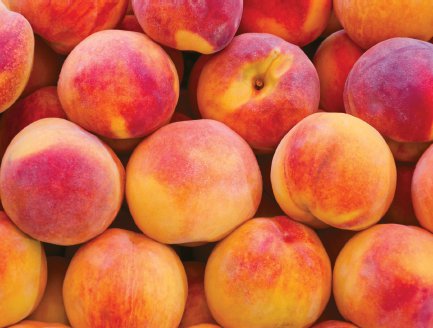
Orange: Like other citrus fruits, oranges are an excellent source of vitamin C, as well as fiber and vitamin A. The antioxidants in oranges have also been found to help in preventing many cancers as well as chronic diseases like arthritis. To get the greatest effect from all these nutrients as well as the fiber, eat an orange rather than drinking its juice.
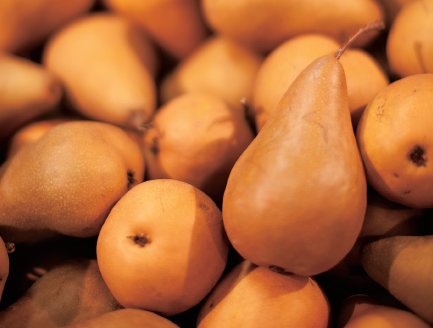
Peaches: The ancient Chinese considered the peach a symbol of longevity, and it turns out they were probably right. Peaches are good sources of potassium, beta-carotene, and vitamin C. They also contain lycopene and lutein, which studies have found to protect against macular degeneration, heart disease, and cancer. And besides, what could be better than a ripe, juicy peach on a hot summer day!
Pears: High in fiber, antioxidants, minerals, and vitamins, pears promote colon and heart health and may offer protection against colon cancer. Pears come in many varieties; try a few and find your favorite.
Pineapple: Known for containing bromelain, an enzyme that digests food by breaking down protein, pineapple has also been shown to have anti-inflammatory, anticlotting, and anticancer properties. And nothing is more delicious than a ripe, juicy pineapple.
Plums: There are so many kinds with so many flavors that I almost feel they’re different kinds of fruit. They come in various colors, but the easiest to find are the red and purple varieties. Plums increase the body’s ability to absorb iron and are a very good source of vitamin C. Have a plum with some Greek yogurt, or stew them with other fruits to make a compote.

Raspberries: Along with other dark red or purple berries, raspberries are rich in antioxidants that reduce inflammation, fight aging, and offer protection against cancer. They are also an excellent source of vitamins C, A, and E. Eat them as a snack, in fruit salads, or with yogurt.
Strawberries: These luscious berries contain vitamins A, C, E, and B-complex as well as potassium, manganese, fluorine, copper, iron, and iodine. They are also low cal and low on the glycemic index, so enjoy them at any time of the day.
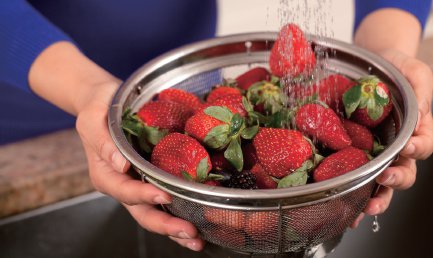
Tomatoes: Considered a superfood because of their great antioxidant properties, tomatoes have been shown to protect against colon, prostate, breast, endometrial, lung, skin, and pancreatic cancer. Cooking tomatoes actually makes more of their antioxidants available for use in your body, so stew them and use them in sauces. Canned plum tomatoes are a great alternative when good tomatoes are hard to find, but don’t forget to enjoy a delicious, ripe local tomato at the height of the summer season.
Watermelon has a lot of sugar (which is why it’s so sweet) but also a lot of—well—water, which means that its glycemic load is relatively low, and it’s also very low in calories. Watermelon contains vitamins C and A as well as potassium and magnesium. So if you want a sweet treat at the end of your meal, have a piece of watermelon. Or try it in a salad with sweet red onion and fresh mint.
Legumes
Defined as plants that bear edible seeds in pods, legumes actually include peas and green beans, which I’ve included in the vegetable category because that’s what most of us consider them. When we think of legumes, we think mostly of the beans we generally buy dried or canned, already out of their pods. Soybeans, lentils, and peanuts are also legumes.
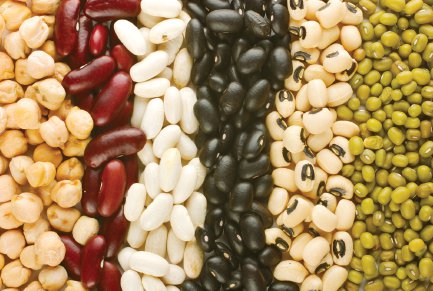
These are an important source of protein and fiber and are also high in B vitamins, folic acid, iron, calcium, potassium, and magnesium. They have been shown to help lower cholesterol and blood pressure, regulate blood sugar, and protect against some types of cancer.
While the protein in legumes (except for soybeans) is not “complete” because it doesn’t provide all the essential amino acids found only in animal sources, legumes, unlike most animal proteins, contain very little fat, and the fat they do contain is not saturated.
While the variety is huge, the legumes we encounter most often include black beans (used copiously in Mexican food), cannellini, chickpeas (aka garbanzos), fava beans, great northern, kidney, lima, navy, and pinto. Be adventurous; try them all, in salads, stews, or as a side dish.
Grains
Amaranth: An ancient food of the Aztecs, amaranth is a tiny yellow grain with a sweet peppery taste that goes well with many vegetables including broccoli, carrots, onions, and red peppers. It is gluten-free and one of only two grains that provide complete protein—quinoa is the other (see below). It also contains linoleic acid and lysine, two essential fatty acids that we must get from food sources. In addition, amaranth is an excellent source of fiber and a great source of iron, magnesium, and calcium. It can help prevent anemia and osteoporosis and has been linked to reducing the risks of heart disease, cancers, and digestive-tract conditions. Look for it in your local health food store, boil some up, and eat it as a hot cereal, like pilaf, or use it to make a tabouli salad.
Barley: The US Department of Agriculture reports that diets high in barley were found to lower total cholesterol levels. It has also been found to help reduce high blood pressure in men. Originally from Ethiopia and Southeast Asia, barley has been around for more than ten thousand years. It is packed with dietary fiber and selenium (an antioxidant), and is also a good source of phosphorus, copper, and manganese. Barley is great in soups and stews; or you can eat it instead of pasta.
Cornmeal: This is a whole grain made from ground corn. It contains many nutrients including niacin, thiamine, riboflavin, pantothenic acid, folate, and vitamins B6, E, and K, as well as valuable minerals such as iron, magnesium, phosphorus, potassium, zinc, copper, manganese, and selenium. Be sure that if you buy cornmeal, it actually is whole grain; otherwise it will have lost much of its nutritional value.
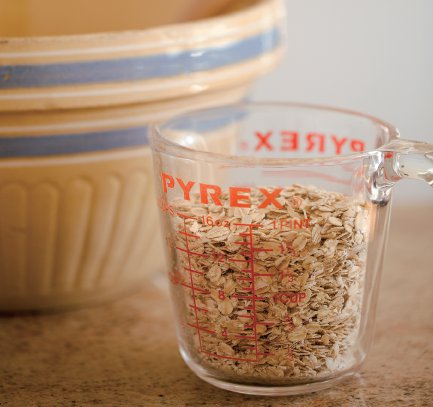
Oatmeal (steel cut): Steel-cut oats are different from traditional rolled oats. Steel-cut oats are just that—oat kernels that have been cut into two or three pieces with steel blades. Rolled oats are rolled flat with most of the bran removed to make them quicker to cook, but they also have much less fiber than steel-cut oats. Oats have been shown to help control blood sugar and lower cholesterol, which makes steel-cut oatmeal a good choice for breakfast.
Quinoa (pronounced KEEN-wah): Like amaranth, quinoa is a source of complete protein. It is also a good source of riboflavin (vitamin B2), which has been shown to reduce the frequency of migraine headaches, and magnesium, which helps to reduce blood pressure and increase cardiovascular health. Eat it instead of oatmeal for breakfast, mix it into salads, or serve it as a pilaflike side dish.
Rice (brown): Much less processed than white rice, brown rice has only the outer hull removed, preserving the bran and most of the germ—along with most of its nutrients. It is high in fiber, an excellent source of manganese, and a good source of selenium and magnesium. It has a great chewy texture and a nutty flavor. Serve it whenever you would otherwise use white rice.
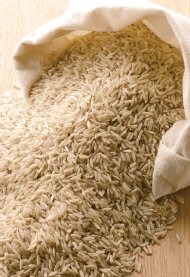
Rye/pumpernickel: Rye is a grain generally used to make bread. Pumpernickel bread is a dark, somewhat sour bread made from whole coarsely ground rye. Rye contain loads of fiber, antioxidants including vitamin E and selenium, iron, magnesium, zinc, and B vitamins. Just be sure that the bread you buy is made from whole rye and not mixed with refined white flour, as many commercial products are.
Spelt: One of my favorites! A cousin of wheat but with more protein and minerals, spelt has a sweet, nutty flavor. It is packed with niacin (vitamin B3), which is needed for proper circulation and helps to reduce cholesterol levels in the blood. Since it has a high water solubility, spelt is said to be easier to digest for those with a wheat intolerance. Spelt makes amazing bread.
Whole wheat: Simply put, this is wheat in its unrefined state, which means that it retains virtually all of its nutritional benefits. It is packed with fiber, has good amounts of vitamins E, B6, and K, and also contains magnesium, iron, calcium, potassium, and zinc. Like other whole grain foods, whole wheat helps to reduce the risk of cancer and cardiovascular disease. Choose whole wheat pastas and breads, and read the labels carefully to be sure that what you’re buying really is 100 percent whole wheat.
Wild rice: Guess what—wild rice isn’t actually a member of the rice family, although it is a grain-producing grass. It’s full of antioxidants and has twice as much protein as brown rice. It also contains important vitamins and minerals including folate, niacin, phosphorus, and zinc. Use it whenever you would otherwise serve brown rice.
As you will have noticed, the legumes and some of the grains discussed above contain significant amounts of protein. Following are the Quick & Clean animal foods that we generally think of when we are thinking about protein.
Fish
All of the fish listed here are rich in essential omega-3 fatty acids as well as other heart-healthy vitamins and minerals. Fish is low in fat and calories, and should be part of any healthy diet. The only caveat is that some fish—tuna in particular—may contain mercury and should, therefore, be eaten sparingly, particular by women who are pregnant or planning to become pregnant. If you’re in doubt, check with your health care provider.
Cod: One of my favorites! This is a mild-flavored white, cold-water fish that’s easily available all year round.
Halibut: A firm, white-meat fish with a delicate sweet flavor, halibut is a favorite among those who think they really don’t like fish. Try it; you’ll probably like it!
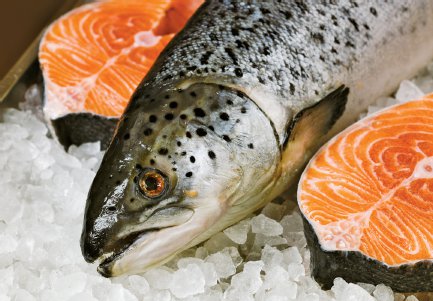
Salmon: A rock star among fish! Wild salmon is better than farmed, and wild Alaskan salmon is the best-of-the-best. When you’re eating wild Alaskan salmon, you don’t have to worry about mercury.
Sardines: In addition to their other health benefits, these small, saltwater, soft-boned fish from the Mediterranean are a great source of tryptophan, a precursor to the production of the neurotransmitter serotonin that provides a sense of well-being and promotes sound sleep. Try them in a salad instead of tuna.
Scallops: I love both the tiny bay scallops and the larger sea scallops. They are a very good source of vitamin B12 and omega-3 fatty acids, and a good source of magnesium, potassium, and other nutrients that supply significant cardiovascular benefits.
Shrimp are so quick and easy to cook, and go well with so many other ingredients, that you will find several shrimp recipes in this book. They are a low-fat, low-calorie protein and contain a good amount of vitamin B12 and omega-3 fatty acids, both of which are known to protect against heart disease and help to lower blood sugar levels.
Meat
Beef can be extremely high in unhealthy saturated fat, and it can also be full of harmful pesticides and hormones. I do eat beef, but only the leanest cuts from organic, grass-fed cattle, which I appreciate can be expensive. The leanest cuts are “round,” which is taken from the back leg bone; flank steak, which comes from the abdominal muscles; and tenderloin, which comes from the tenderloin muscle. Tenderloin, as the name implies, is extremely tender and good for grilling. Both the round and the flank are much less tender and, therefore, require relatively long cooking. You’ll find a recipe for flank steak in chapter 14.
Buffalo meat: Lower in fat than most cuts of beef, buffalo is rich in vitamins and minerals, tends to have more iron than beef, and can be prepared in the same ways as its beef cousin.
Calf’s liver: Liver can be a tough sell, so hear the facts. It’s packed with vitamins A, Bs (riboflavin), and D, and is loaded with iron and copper. It’s also low in fat and calories. Try it grilled with onions. Maybe the onions will do it for you.
Nitrite-free turkey bacon is the only exception to the Quick & Clean embargo on cured meats (see chapter 6).
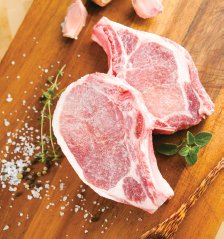
Pork: A lean, white meat, pork is high in thiamin and lower in salt than other meats. It’s also a great source of iron and is rich in vitamin B12 and zinc. It’s sweet tasting and can be prepared in a variety of ways. Pork tenderloin is great for grilling, and you’ll find a Quick & Clean pork chop recipe in chapter 14.
Poultry (white-meat chicken, turkey, and Cornish hen): A low-fat alternative to beef, white-meat poultry is a generous source of B vitamins and other nutrients. There are many types of poultry with different flavors. It is easy to prepare and very versatile. Try some of the recipes in chapter 14 or do it “your way.”
Fats
Canola oil: Among the healthiest of cooking oils, canola oil has less saturated fat than any other oil commonly consumed in the United States, including olive oil. In fact, there is enough evidence for the heart-healthy benefits of this oil that the Food and Drug Administration allows manufacturers to make a qualified health claim on their label. And because it has a much lighter flavor than olive oil, it is the better choice for cooking when you don’t want the flavor of the oil to interfere with the flavor of the food.
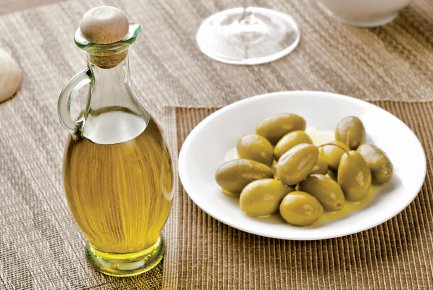
Extra-virgin olive oil: Olive oil is a monounsaturated fat that has been shown to reduce blood pressure, inhibit some cancers, and stave off heart disease by controlling bad (LDL) cholesterol levels while raising good ones (HDL). “Extra virgin” is the highest quality and purest of the many types of olive oil on the market. In addition to using it in salad dressings and for cooking, try dipping whole grain bread into it instead of butter—the way the Italians do!
Flaxseed oil: Recent studies are indicating that flaxseed oil has significant health benefits, as it is a plant source for omega-3 fatty acids, which are generally found mostly in fish. It also contains estrogen-like compounds called lignans that studies have shown to be protective against breast cancer. It’s not good for cooking because heating it can destroy its health benefits, but it’s great in salad dressings, and I also use it to make my Mixed Berry and Flaxseed Oil Super Smoothie (chapter 14).
Safflower oil: Often confused with sunflower oil, safflower oil has a light, delicate flavor; is low in saturated fat; and is high in both omega-6 fatty acids, which may help to burn fat, and vitamin E. Use it for cooking or in salad dressings.
Dairy
Cheese: There are so many different kinds of cheese that it would be impossible to even begin to talk about them individually. Like other dairy products, cheese is a good source of protein and is high in calcium, which is good for bone health. But cheese can also be high in fat, so you should eat it sparingly. In general, hard cheeses are lower in fat than soft ones. As you can imagine, cheeses labeled “triple crème” are extremely high in fat, while string cheese, for example, has a relatively low fat content. So do your homework, compare flavors and fat, and enjoy cheese as a snack, with fruit, or as a garnish—just don’t overindulge.

Eggs: I learned to love them. Eggs contain super high quality protein and are very clean. They’re packed with vitamins and minerals and keep you full for a long time. If cholesterol is a problem for you, just stay away from the yolks.
Greek yogurt: The new star among health-conscious foodies, Greek yogurt has more protein and less sugar than regular yogurt. It’s also richer and creamier because the water and whey have been strained out, but you should know it also has a slightly bitter taste that may take some getting used to. Look for low-fat varieties (I use 2 percent fat and also nonfat), and try it with fruit.
Kefir: A fermented milk drink, kefir is a probiotic known to restore the balance of intestinal flora for digestive health. It is also a source of complete protein and is rich in vitamins and minerals. Look for it in a variety of flavors near the yogurt in your supermarket.
Milk: Most of us need milk sometimes, but we certainly don’t need all the fat in whole milk. I use skim milk as well as 1 and 2 percent milk. My advice is to go as low fat as you can. Or try light soy milk.
Sweeteners
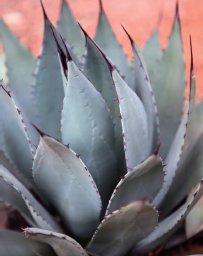
Agave: The natural sweetener agave is quickly becoming a favorite in the kitchen. Once associated with making tequila, it is now becoming an alternative to table sugar. Agave comes from the leaves of the Agave americana plant. The nectar is expressed from the leaves, then filtered and heated. Because it is composed mainly of fructose and glucose, it has a lower glycemic index than sucrose (table sugar). It comes in light (or golden) and dark (or amber) varieties. The light kind is heated to lower temperatures in processing and tastes milder. The dark, which is heated to higher temperatures, tastes more like molasses or maple syrup. Agave dissolves easily and can be used as a sweetener in any dish, sauce, dressing, or dessert. A little goes a long way.
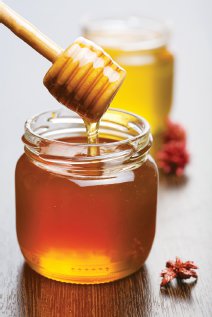
Raw honey: Dr. Oz calls this “liquid gold” because of its healing properties. Raw honey hasn’t been filtered, strained, or heated, so it retains all its nutrients. It’s rich in vitamins B1, B2, B3, B5, and B6 as well as vitamin C; it contains minerals including magnesium, potassium, calcium, sodium, sulfur, and phosphate. It is known to have antibacterial and antifungal properties and makes a great alternative to Neosporin (yep!). Because of its immune-boosting, antiviral properties, raw honey has been used in the treatment of ulcers, diarrhea, bronchitis, and gastrointestinal problems. A sweetener with health benefits—how sweet is that! If you can buy it organic, go for it.
Stevia: A zero-calorie sugar substitute that comes from the stevia plant, this sweetener is twenty-five to thirty times sweeter than sugar in addition to being far healthier. Stevia comes in both granule and liquid form and in a variety of flavors. It has a zero glycemic index and is recommended for diabetics. It can be added to all types of foods and is particularly great for sweetening desserts.
Truvia is a natural, stevia-based sugar substitute that comes in powder form and can be used in the same way as table sugar. If you have a sweet tooth, this is a good option for any stage of the Quick & Clean Diet.
Xylitol: A sugar alcohol sweetener commonly used as a sugar substitute, xylitol occurs naturally in the fibers of many fruits and vegetables and can be extracted from various berries, oats, and mushrooms. Xylitol is commonly found in breath mints and chewing gum and is considered safe for diabetics because it has almost no effect on insulin levels and is not easily converted to fat. Some studies have shown that xylitol may even help improve bone density and could be a potential treatment for osteoporosis.
There are many of claims of health benefits for xylitol, but there are some warnings too. One in particular that you need to know about is that in excess xylitol, like many sugar alcohols, can have a laxative effect, causing temporary gastrointestinal effects like bloating, flatulence, and diarrhea. So if you are interested in using xylitol as a sugar substitute, don’t go crazy. It can be purchased in a powder form—much like a bag of sugar—from health food stores.
We just took a look at foods to love, and in the next chapter we’ll explore ways to spice up your dishes. The best part of what I call your Q & C pantry partners is that they’re packed with flavor and very few calories!
